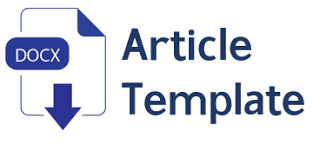Evaluasi Spasial Dan Klasifikasi Kualitas Sinyal Lora Di Lingkungan Indoor Bertingkat dengan Algoritma K-means
DOI:
https://doi.org/10.61124/sinta.v2i3.84Keywords:
LoRa, RSSI, K-Means Clustering, Kualitas Sinyal, Lingkungan IndoorAbstract
Implementasi jaringan LoRa di gedung bertingkat menghadapi tantangan redaman sinyal akibat struktur fisik bangunan yang kompleks. Penelitian ini bertujuan untuk mengevaluasi distribusi spasial kualitas sinyal LoRa dan mengidentifikasi pola persebarannya di sebuah gedung perkantoran 18 lantai. Pengambilan data dilakukan pada 119 titik ukur yang tersebar di 16 lantai, dengan parameter utama Received Signal Strength Indicator (RSSI) dan Signal-to-Noise Ratio (SNR). Algoritma K-Means Clustering diterapkan untuk mengklasifikasikan titik-titik pengukuran tersebut ke dalam kelompok-kelompok berdasarkan karakteristik kualitas sinyal yang serupa. Hasil clustering membentuk enam klaster yang merepresentasikan tingkat kualitas sinyal dari ‘sangat buruk’ hingga ‘sangat baik’. Analisis menunjukkan bahwa distribusi kualitas sinyal sangat tidak merata; lantai seperti 5, 9, dan 13 didominasi oleh klaster sinyal ‘sangat baik’, sedangkan lantai dasar, mezzanine, 1, 14, dan 15 justru menunjukkan kualitas sinyal yang rendah. Temuan kunci dari penelitian ini adalah bahwa jarak ke gateway bukan merupakan satu-satunya penentu kualitas sinyal. Banyak titik dengan kualitas buruk justru berada dekat dengan gateway, yang mengonfirmasi bahwa halangan fisik dalam ruangan memiliki pengaruh dominan terhadap atenuasi sinyal LoRa.
References
M. A. Ahmed, S. A. Chavez, A. M. Eltamaly, H. O. Garces, A. J. Rojas, and Y.-C. Kim, “Toward an Intelligent Campus: IoT Platform for Remote Monitoring and Control of Smart Buildings,” Sensors, vol. 22, no. 23, p. 9045, Jan. 2022, doi: 10.3390/s22239045.
M. S. Farooq et al., “A Survey on the Role of Industrial IoT in Manufacturing for Implementation of Smart Industry,” Sensors, vol. 23, no. 21, p. 8958, Jan. 2023, doi: 10.3390/s23218958.
IoT Analytics, “State of IoT 2024: Number of connected IoT devices growing 13% to 18.8 billion globally,” IoT Analytics, 2024. https://iot-analytics.com/number-connected-iot-devices/ (accessed Dec. 20, 2024).
M. A. M. Almuhaya, W. A. Jabbar, N. Sulaiman, and S. Abdulmalek, “A Survey on LoRaWAN Technology: Recent Trends, Opportunities, Simulation Tools and Future Directions,” Electronics, vol. 11, no. 1, p. 164, Jan. 2022, doi: 10.3390/electronics11010164.
R. Liang, L. Zhao, and P. Wang, “Performance Evaluations of LoRa Wireless Communication in Building Environments,” Sensors, vol. 20, no. 14, p. 3828, Jan. 2020, doi: 10.3390/s20143828.
K. Wye et al., “RSSI-based Localization Zoning using K-Mean Clustering,” in IOP conf. Ser. Mater. Sci. eng., Dec. 2019, p. 012038. doi: 10.1088/1757-899X/705/1/012038.
M. A. Fadhillah, “Implementasi Algoritma K-means Terhadap Clustering Performa WiFi di Politeknik Negeri Jakarta,” D4 Thesis, Politeknik Negeri Jakarta, 2024.
K. F. Ainun, Shiddiqi A.M, “Optimization of Access Point Positioning on Wi-Fi Networks Using the K-Means Clustering Method,” IPTEK The Journal for Technology and Science, vol 33, no. 1, 2022, http://dx.doi.org/10.12962%2Fj20882033.v33i1.12402.
F. A. P. L. D. Reis, L. M. de Souza, T. M. d. C. e. F. Filho, and E. P. L. de Almeida, “K-Means Spreading Factor Allocation for Large-Scale LoRa Networks,” Sensors, vol. 19, no. 21, p. 4723, Nov. 2019, doi: 10.3390/s19214723.
B. Pinto, R. Barreto, E. Souto and H. Oliveira, "Robust RSSI-Based Indoor Positioning System Using K-Means Clustering and Bayesian Estimation," in IEEE Sensors Journal, vol. 21, no. 21, pp. 24462-24470, 1 Nov.1, 2021, doi: 10.1109/JSEN.2021.3113837.
G. P. Mauricio, T.V. Diana, M.S.C. Lina, M. C, R. Santiago, “LoRaWAN Path Loss Measurements in an Urban Scenario including Environmental Effects,” MDPI, vol 8, no 1, 22 December 2022. https://doi.org/10.3390/data8010004.
H. Chen, J. Yang, Z. Hao, T. Qi, T. Liu, “Research on indoor multi-floor positioning method based on LoRa,” Computer Networks, Volume 254, 2024. https://doi.org/10.1016/j.comnet.2024.110838.
A. S. d. S. Junior, D. G. de Almeida, G. d. C. M. de Lima, and Y. Iano, “Performance evaluation of LoRa technology for implementation in rural areas,” Dyna, vol. 88, no. 216, pp. 69–77, 2021, doi: 10.15446/dyna.v88n216.89069.
L. G. Al-Absi, G. Dhafer, and F. Al-Absi, “Explainable Machine Learning for LoRaWAN Link Budget Analysis and Modeling,” Sensors, vol. 24, no. 3, p. 993, Feb. 2024, doi: 10.3390/s24030993.
S. Saxena and S. K. Roy, “A Comprehensive Survey of Clustering-Based Routing Protocols in Wireless Sensor Networks,” Journal of Network and Computer Applications, vol. 189, p. 103138, Sep. 2021.
S. Ahmad, S. K. Singh, M. F. Pasha, and A. A. A. Algarni, “A review of clustering techniques and developments,” Neurocomputing, vol. 267, pp. 664–681, Dec. 2017, doi: 10.1016/j.neucom.2017.06.054.
J. Oyelade, O. Oladipupo, and I. C. Obagbuwa, “Data Clustering: Algorithms and Its Applications,” in Proc. 2019 19th international conference on computational science and its applications (ICCSA), Saint Petersburg, Russia, Jul. 2019, pp. 71–81. doi: 10.1109/ICCSA.2019.000-1.
F. A. M. H. F. Al-Absi and M. S. Al-Absi, “Experimental Comparison of SNR and RSSI for LoRa-ESL based on Machine Clustering and Arithmetic Distribution,” IEEE Access, vol. 11, pp. 91705–91717, 2023, doi: 10.1109/ACCESS.2023.3308307.
T. Attia, M. Heusse, B. Tourancheau, and A. Duda, “Experimental Characterization of LoRaWAN Link Quality,” in Proc. 2019 IEEE Global Communications Conference (GLOBECOM), Waikoloa, HI, USA, Dec. 2019, pp. 1–6. doi: 10.1109/GLOBECOM38437.2019.9013371.
J. Han, M. Kamber, and J. Pei, “Data Mining: Concepts and Techniques,” 3rd ed. Waltham, MA: Morgan Kaufmann, 2012.
I. F. Ashari, E. D. Nugroho, R. Baraku, I. N. Yanda, and R. Liwardana, “Analysis of Elbow, Silhouette, Davies-Bouldin, Calinski-Harabasz, and Rand-Index Evaluation on K-Means Algorithm for Classifying Flood-Affected Areas in Jakarta,” J. Appl. Inform. Comput., vol. 7, no. 1, pp. 32–40, Jul. 2023, doi: 10.30871/jaic.v7i1.4947.
Downloads
Published
How to Cite
Issue
Section
License
Copyright (c) 2025 Dini Aditama, Acep Taryana, Hari Siswantoro

This work is licensed under a Creative Commons Attribution 4.0 International License.









